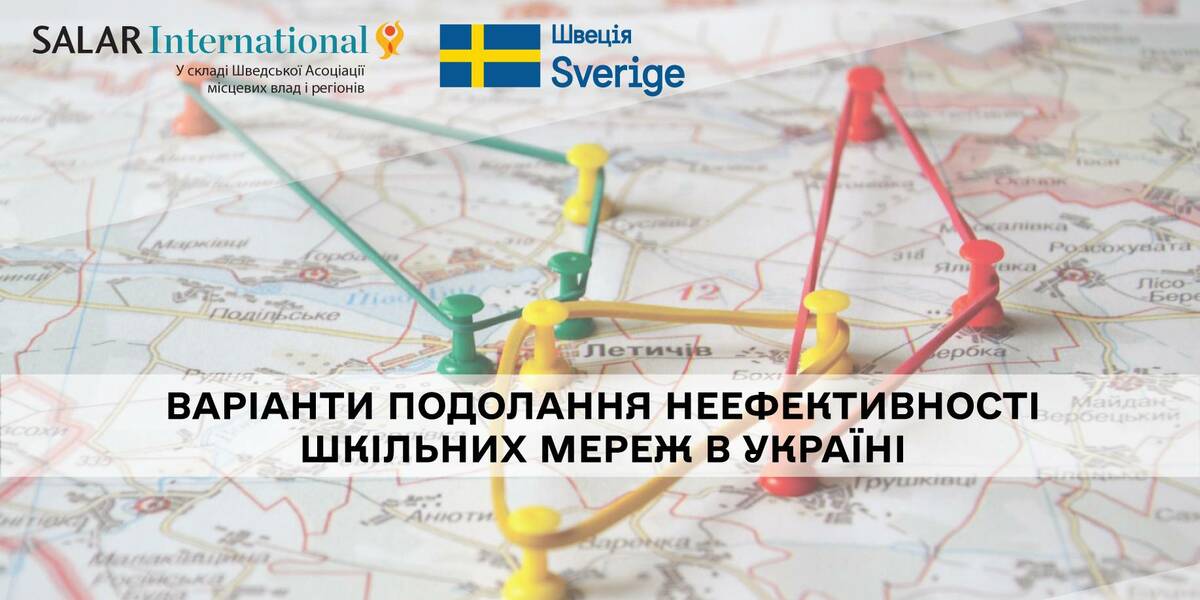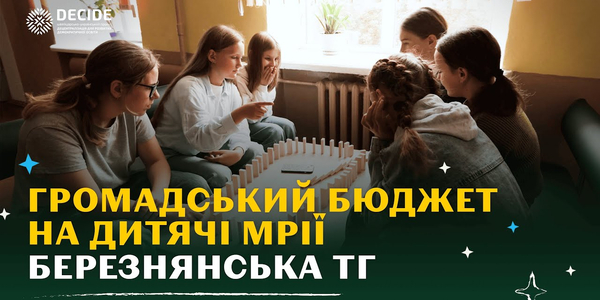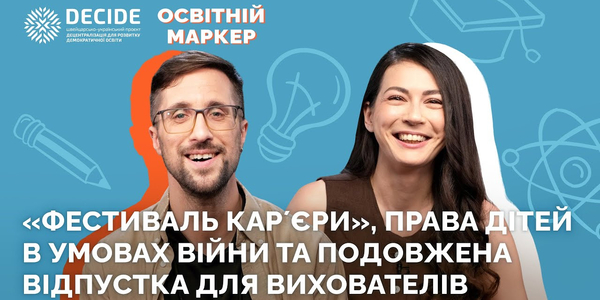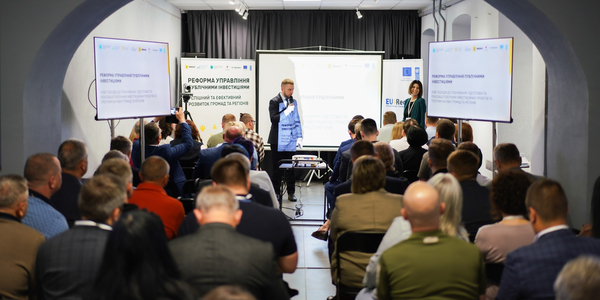
Jan Herczyński
“Support to Decentralization in Ukraine”
SKL International
3. Implications for allocation formula for education subvention
Inefficiency of the network of secondary schools in Ukraine is a topic of great concern to the Government of Ukraine, especially to the Ministry of Education and Science (MES) and to the Ministry of Finance (MF). It has also attracted significant interest from international experts, working for the World Bank, for the OECD, and for various donor assisted projects in Ukraine itself. See for example Review of the Education Sector in Ukraine, World Bank 2019. The Swedish-Ukrainian project “Support to Decentralization in Ukraine” (SDU) also devoted many publications to this problem, beginning with the Short Note 24 Policy options regarding fragmented school networks in Ukraine, published in August 2015.
The inefficiency of networks of secondary schools in Ukraine is best analyzed through class sizes. The following Table 1 presents average class size in mainstream (non-special) secondary schools by education level and by type of territorial gromada in September 2021 (last year before full-scale Russian aggression).
Table 1. Average class size by type of TG and by education level (2021)
|
Type of territorial gromada
|
Grades
|
||
|
1 – 5
|
5 – 9
|
10 – 12
|
|
|
Kyiv
|
28,37
|
27,73
|
25,09
|
|
Former cities of oblast significance
|
26,62
|
26,34
|
24,61
|
|
Urban TG
|
16,89
|
17,40
|
16,40
|
|
Settlement TG
|
15,21
|
15,85
|
14,53
|
|
Rural TG
|
14,51
|
15,15
|
13,64
|
|
Total
|
20,27
|
20,52
|
18,93
|
Two most important challenges relate to rural schools and to upper secondary schools (grades 10 to 12). The issue of rural schools is that very often they are small and consequently have small class sizes and low student teacher ratio. We note from Table 1 that class sizes in rural TG are on average only about 55% of those in the cities. The issue of upper secondary schools is that after some students leave for vocational education following completion of the ninth grade, network of classes is not adjusted and the average class size is reduced. Again, Table 1 shows that class sizes in upper secondary school are catastrophically small for schools outside of Kyiv and oblast centers. Overall, they are about 8% smaller than those in basic education, in direct opposition to European upper secondary schools, where average class size is significantly larger than in primary education.
It is clear that both issues – of rural and upper secondary schools – increase per student costs considerably. They are also directly detrimental to education quality.
In the conditions of decentralization, all decisions about the local school networks are taken by school founders, that is by territorial gromadas (TG). The role of MES as the architect of the system is thus mainly restricted to regulating the sector through normative acts. For this reason, the purpose of the present Short Note 147 is to review in which way the normative acts can strengthen the motivation of TG to optimize their school networks and in this way improve efficiency of the system. In section 1 we discuss rural schools, and in section 2 the upper secondary schools. In the final section we review the implications of proposed actions for the allocation formula for education subvention from the national to local budgets.
We note that some other sources of inefficiency of secondary education, not due to class sizes, namely related to individual instruction, to division of classes into groups, and to groups of prolonged stay, were discussed in recent Short Notes and are not addressed here.
The present SN is continuation of analytical support provided by SDU experts to MES. Recent notes on related subjects are SN 123 on modelling the network of lyceums (March 2021), SN 124, 126, 128 and 129 on normative class sizes (April to November 2021), SN 133 on school network optimization (December 2021).
1. Rural schools
Rural schools have average class size significantly lower than urban schools (see Table 1), and therefore less efficient and more costly on a per student basis. The decision to optimize school network belongs to school founder. There are several options available to TG:
- Closing the school and transferring all of its students to a nearby, larger school.
- Transforming the school into a satellite school, belonging to a nearby, larger hub school.
- Lowering the educational level of the school, by discontinuing its upper secondary grades (9 to 12) and transferring those students to a nearby school. It is also possible to discontinue basic grades (5 to 9).
All described options have been used by Ukrainian territorial gromadas. In the following tables we present the scope of these decisions of TG between September 2019 and September 2021 for the first two options (closures and change of type, Table 2), and for the last option (discontinuation of an education level, Table 3).
The following Table 2 summarizes at the national level network decisions of territorial gromadas (source of the table: SN 133). For completeness, table includes not only transformation of the stand-alone school into a hub or a satellite, but also reverse decisions.
Table 2. Changes in local school networks 2019-2021
|
|
Number of schools
|
||||
|
Regular
|
Hub
|
Satellite
|
Total
|
||
|
Schools on September 5, 2019
|
14 020
|
772
|
1 189
|
15 981
|
|
|
Schools closed during the school year 2019/20
|
-151
|
-1
|
-47
|
-199
|
|
|
Change of school status introduced during the school year 2019/20
|
Regular into hub
|
-280
|
280
|
|
|
|
Regular into satellite
|
-217
|
|
217
|
|
|
|
Hub into regular
|
55
|
-55
|
|
|
|
|
Satellite into regular
|
16
|
|
-16
|
|
|
|
Schools opened during the school year 2019/20
|
8
|
|
59
|
67
|
|
|
Schools on September 5, 2020
|
13 451
|
996
|
1 402
|
15 849
|
|
|
Schools closed during the school year 2020/21
|
-508
|
-1
|
-209
|
-718
|
|
|
Changes introduced during the school year 2020/21
|
Regular into hub
|
-232
|
232
|
|
|
|
Regular into satellite
|
-435
|
|
435
|
|
|
|
Hub into regular
|
11
|
-11
|
|
|
|
|
Hub into satellite
|
|
-1
|
1
|
|
|
|
Satellite into regular
|
23
|
|
-23
|
|
|
|
Schools opened during the school year 2020/21
|
46
|
|
19
|
65
|
|
|
Schools on September 5, 2021
|
12 356
|
1 215
|
1 625
|
15 196
|
|
The lowering of education level of schools between 2019 and 2021 is summarized in the following Table 3 (taken from SN 133). The education level may be lowered for regular school, for satellite, and when a regular school is being transformed into satellite and become a part of the hub school. Lowering of levels is determined by observing student numbers in three education levels in successive school years. Of course, hub schools as such do not lower their education level.
Table 3. Lowering of education level 2019-2021
|
School undergoing the lowering of education level
|
School year
|
|
|
2019/20
|
2020/21
|
|
|
Regular
|
379
|
543
|
|
Regular transformed into satellites
|
33
|
121
|
|
Satellites
|
45
|
82
|
|
Total
|
457
|
746
|
These two tables show that all three types of decisions leading to optimization of local school network were much more frequent in the school year 2020/21 than in the preceding school year. Data for the school year 2021/22 are not yet available (analysis is under way), however the changes in 2022 were dictated more by the aggression of Russian Federation than by own decisions of territorial gromadas.
Despite quickening pace of optimization, as indicated in Table 2 and Table 3, the efficiency of rural school networks remains low. One of the reasons for this is the lax formulation or requirements for hub schools and satellite schools, included in Decree of CMU Nr 532 of June 19, 2019 (with later changes), and even less stringent application of this degree:
- The decree allows satellite school to have initial grades, and in special cases with the permission of the founder also basic grades. The requirement to limit the satellite school to just initial grades would enhance efficiency.
- Despite clear limitations of the Decree, there are satellite schools with upper secondary education. In such cases, creation of the hub school has no impact at all on efficiency.
- There are many hub schools without satellite schools. This happens because various investment transfers were limited only to hub schools. However, naming a school a hub school make no impact on efficiency.
We note that the number of hub schools increased quickly as a result of the requirement that some investments like purchase of the bus or provision of school cabinets were conditional on the school being the hub. However, with soft formulation and no enforcement, these investments did not motivate school optimization. Thus hub and satellite schools, while in principle an instrument to improve efficiency and to provide better education for all students in rural areas, in practice have very limited impact. To address this problem, we may formulate the following recommendations:
- The definition of the hub school should include a requirement of at least one satellite school with enrolled students. Preferably, the requirement may be that at least 2 or 3 satellite schools are included.
- The definition of the satellite school should include a requirement that it offers only initial education. After grade 4, students should move to the hub school.
- The legal requirements on the hub and satellite schools should be strictly enforced. In particular, there should be no targeted investment grants to hub schools not meeting these requirements.
With these changes and with continued investments restricted to hub schools, we may expect stronger movement towards optimization of rural school networks across Ukraine.
Another important issue which weakens the ability of rural TG to adjust their network of secondary schools concerns the time required to implement the decision. Part 2 of art. 32 of Law Nr 463-IX on Full Secondary Education of January 16, 2020 (with later changes) states that Reorganization, change of type, or closure of institution of general secondary education located in rural territory is allowed only after public discussion of the draft of relevant decision of the school founder, which is made public at least one year before adopting the relevant decision. This clause, adopted in 2021, extends the period of making any changes to the network of public schools in rural areas.
It must be recognized that making changes to the network of secondary schools, is an important prerogative of gromadas, which impacts lives of its citizens, especially of its youth. For this reason some clauses similar to part 2 of art. 32 are adopted by different countries. For example, Polish legislation requires that preliminary decision of the local council about change of type, reorganization, or closure of a school is taken in February, of course becomes public then, and the final decision is taken by the council in August, before the start of the new school year. However, this limits the delay to half a year. The Ukrainian clause, in comparison, makes school changes much more difficult.
Incidentally, two important aspects of Polish regulation are absent in Ukraine:
- The decisions to change school network, whether preliminary or final, must be adopted by the council, not just by the school founder. For this reason these decisions are immediately public, there is no need for a separate requirement that they be made public.
- Any decision to change the network of schools must come into force at the beginning of the school year. It is not allowed to close a school, for example, in April.
The ability of gromadas to adjust the network of their secondary schools and to improve its efficiency would become much stronger if a clause similar to Polish one were adopted in Ukraine. For this reason, we recommend that:
- The law foresees publication of optimization plans before the end of February as a legal condition for implementing these plans in September of the same year (this will reduce the delay time from 12 months to 6 months).
- The law restricts any changes to the school network to be implemented at the start of the school year (this would strengthen the stability of functioning of schools and will protect continuity of the pedagogical process).
Finally we note that for some strange reason part 2 of art. 32 refers only to rural schools. There are no grounds to treat rural and urban schools differently in this regard. It is recommended that the same rules apply to all schools irrespective of their location.
2. Upper secondary schools
As noted in Table 1, upper secondary grades have smaller classes than earlier grades. At the same time they offer more subjects, require more school laboratories, and need teachers with advanced skills. Lower class sizes is an anomaly in comparison to EU countries. This represents a serious source of inefficiency. The creation of many-profiled lyceums (upper secondary schools) is a very good opportunity to address this problem.
However, the requirements for upper secondary schools in the Law on Full Secondary Education have been step-by-step weakened. We can mention the following issues:
- Initially, the founders of lyceums were designed regions and cities with over 50 thousand inhabitants. Presently, any local council can be a founder of lyceum.
- Initially, in order to open a lyceum it was required that at least four parallel classes in grade 10 are present. Now this requirement was reduced to 2 classes with at least three profiles (thus allowing more than one profile per class).
- Initially, lyceum should include only upper secondary grades, and as an exception also basic grades. Now, it can include basic and upper secondary grades, and as an exception also initial grades.
This weakening of the requirements for lyceum carries a very serious risk that the present, very inefficient structure and distribution of upper secondary schools (illustrated in Table 1) will be maintained in Ukraine after the reform of lyceum is implemented. An important task of MES is to avert this risk.
We stress that even with four classes in each grade, and with 30 students in each class, a complete lyceum would have only 360 students, so would be rather small by European standards. Moreover, small lyceums will not be able to provide their students with meaningful choice of profiles, or with sufficient access to advanced school laboratories. This means that both education quality and education efficiency will suffer.
Thus we can recommend to return to original strong requirements on hub schools. The following steps should be urgently taken to create an efficient network of upper secondary schools in Ukraine:
- Return to the original or stronger requirements concerning the number of classes and of profiles in the profile lyceum. These requirements should be valid permanently, not only when the lyceum is opened.
- Add requirement concerning the class size in profile lyceum. It is reasonable not only to define maximum class size, but also minimum class size which will be financed from the education subvention (thus the costs of smaller classes will be borne by the founder of lyceum). For example, this may be 27,5, which is the maximum normative class size used in the allocation formula.
- Add requirement that a class in profile lyceum should follow one profile. Allowing two or more profiles in one class will force many lessons to be conducted for smaller groups, thus reducing quality and efficiency.
- Return to the question of who will be the founder of lyceum. Here it is important that area of school founder should not be smaller than the catchment area of the school. If proper minimum number of students of lyceum is adopted, this requirement will be met only by large cities and oblasts, as in the original requirements of the Law on Full Secondary Education.
Further, the following open issues should be discussed and addressed:
- How to ensure reconstitution of classes in grade 10 following transition from basic school? As Table 1 indicates, this does not happen now, and classes in grade 10 are smaller than in grade 9. One approach would be to require that lyceum is always a separate school, that is not to allow schools with level configuration I-II-III or II-III. Today, all configurations are allowed. If all students move to a new school after grade 9 (as happens in Poland after grade 8, and as is standard in European countries), then reconstitution of classes will become not only obligatory, but also natural.
- How to treat professional-vocational schools (PTU). Today, the law foresees that profile education will have both academic and professional direction (спрямування), and that professional direction is offered in professional (professional-vocational) schools, art. 6 and 35. This implies that lyceums offer only academic profiles. On the other hand, among the lyceums there are artistic and sports lyceums, and it is an open question will they offer academic profiles. It seems that it is high time to define PTU as professional lyceums and treat them as parallel upper secondary schools, governed by the same laws and rules.
- How to ensure quality of profiles in upper secondary school. The law does not define the profiles, it does not state that a list of profiles will be adopted. This creates the conditions when schools themselves are free to adopt any profiles they think are attractive to their students. However, to ensure consistent quality it is important that for each profile a set of textbooks, teaching materials, school laboratories and similar be determined. Key role should be played by the Institute of Content of Education under MES.
- Law Nr 2145-VIII on Education of September 5, 2017 (with later changes) requires oblast administrations and Kyiv administration to maintain the plan of profile upper secondary schools (art. 66). However, no specific details about these oblast-level plans is included in the Law on Full Secondary Education. This law allocates the responsibility for the network of profile lyceums to all local councils (art. 32), without any reference to the oblast plans. Thus oblast plans of profile lyceums are completely ineffective, even if they are adopted, and do not limit school founders in any manner. Stricter rules regarding the enforcement of oblast plans, if adopted in Law on Full Secondary Education, may become a useful policy instrument to ensure quality of created lyceums, as well as their size.
Taking into account these concerns, we can formulate the following additional recommendations regarding profile upper secondary schools:
- Add requirement that a lyceum is a stand-alone school, without lower education levels. This change will make the implementation of the reform of lyceums more complex, as it will require more difficult decisions regarding personnel and facilities. On the other side, by making this process more formalized an opportunity will be created for better selection of principals and teachers of lyceums. This will also automatically enforce reconstitution of classes following grade 9. Law on Full Secondary Education already foresees competition-based enrollment in lyceums (art. 9, point 3).
- Resolve the legal issue of the relationship between lyceums and PTU. Due to their parallel function in the Ukrainian education, they should have the same founders. This is the additional argument for making lyceums responsibility of oblasts and of large schools.
- Require that MES adopts a decree with a list of profiles, with a procedure for extending this list in response to either new social needs or to initiatives of school founders. Such a list will make it easier to conduct external school evaluation by State School Inspection.
- Add clear strict rules regarding the application of oblast plans of profile upper secondary schools.
3. Implications for allocation formula for education subvention
We can identify the following changes which may be introduced into the allocation formula for education subvention in the coming years:
- Increase of lowest normative class size Presently, normative class size has values ranging from 10 to 27,5. The values of class size of 10 or 11 are obviously very inefficient. Following the recommendations of section 1, in parallel to expected increase of average factual class size, it is reasonable to increase the minimum normative class size as well.
We note that by increasing the lowest class size the formula will exert stronger pressure on TG to optimize their school network, in particular by forming more satellite schools with only initial grades. Increasing the minimum normative class size will not spoil the monotonicity in the table of normative class sizes in the formula, and will not increase “jumps” of normative class sizes for neighboring cells in the table.
However, it is important to realize that normative class size cannot be indefinitely increased. School founders need to know the future rules of allocation of education subvention. This means that MES should decide, and declare publicly, what will be the target value of minimal normative class size, and how this target value will be reached. For example, MES can state that minimum normative class size will be increased to 12, and that the increases will be introduced in successive budget year by 0,5. The target value will be thus reached in 4 years. In this way school founders will have some time to adjust their school networks, and will know what is the final value of normative class size.
- Separate normative class size for upper secondary school. Today, the normative class sizes are assessed at the same level for all three education levels. Following the recommendations of section 2, MES should adopt separate two values of normative class sizes: one for initial and basic education, and one for upper secondary education. Of course, the latter should be larger.
An interesting open question is whether normative class sizes for upper secondary education should be uniform for the whole country, for example at 27,5, or should depend on location of the school. If a minimum class size in lyceum relevant for financing from education subvention is adopted, then uniform normative class size should be that minimum. Thus, uniform normative class size for lyceums would be used, in contrast to non-uniform normative class size for initial and basic school.







